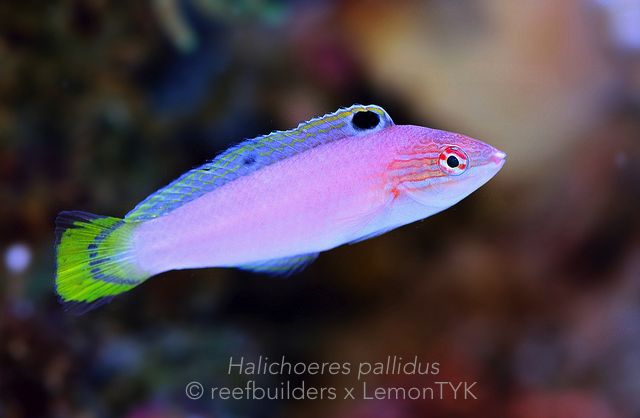A pig that’s not a pig, it’s a babi wrasse! For the record, if you said bacon you’d also be correct. “Babi” is the Malay and Indonesian word for pig, and apart from delicious Balinese cuisine like Babi Guling, it is also used as the common name for Halichoeres pallidus. The babi wrasse ranges predominantly in the Banda archipelago and the Babi island in Flores, although it can be found in other parts of Indonesia and eastwards to Micronesia as well.

Despite its range, Halichoeres pallidus is surprisingly uncommon in the trade and shows up very sporadically and randomly. Like many Halichoeres, H. pallidus is haremic and is found in small groups consisting mainly of females and juveniles, guarded and dominated by a single large male. Their habitat is typical of the genus, which consists of clear water along outer reef walls, often near sandy substrate rich in invertebrate growth. Unlike the other shallower dwelling members, H. pallidus is usually found at 100ft and beyond, sometimes up to 200ft. Apart from the H. chlorocephalus group, H. pallidus also forms a distinct clade of deeper water Halichoeres.
The appearance of the babi wrasse recalls that of the ubiquitous H. chrysus, but on the first dorsal spine the former possesses a large black spot which H. chrysus lacks. The species is uniformly powder pink, with a lemon yellow tail rimmed in clear edges. Larger males may develop a more orangey tail with a flag pattern.

Pink is an uncommon colour for this genus, and apart from this species, only H. melasmapomus and H. trispilus share the same overall colour scheme. The latter is the Indian Ocean sister to H. pallidus, and is more commonly seen coming out of Maldives. H. trispilus is wide ranging and stretches as far east to Java, where it is at its easternmost limit of its range.

The photo above shows a female of H. trispilus with the triple spotted dorsal fin. Like H. pallidus, it is also pink with a yellow tail, but more often than not it is more subdued in intensity. Halichoeres is an aquarium staple with many species to choose from, but if you’re tired of the yellow H. chrysus, or the plane jane H. chloroptera, then jump the colour scheme and keep an eye out for the pretty in pink H. pallidus.
Its temperament and husbandry is the same as any other in the genus, and will make a great addition to any reef where it may hunt unwanted coral pests. Just remember that this pig ain’t gonna yield any bacon when it expires.



